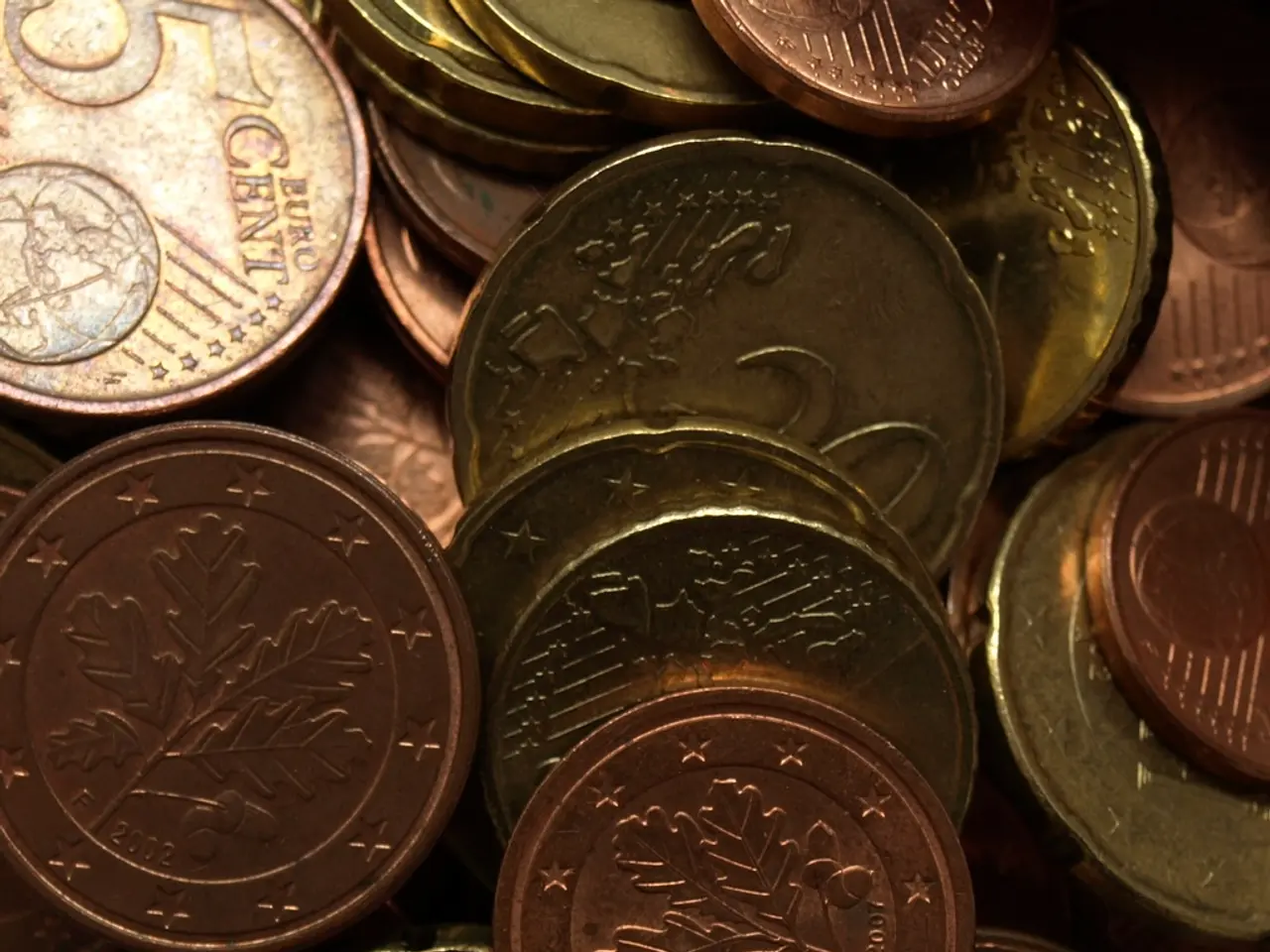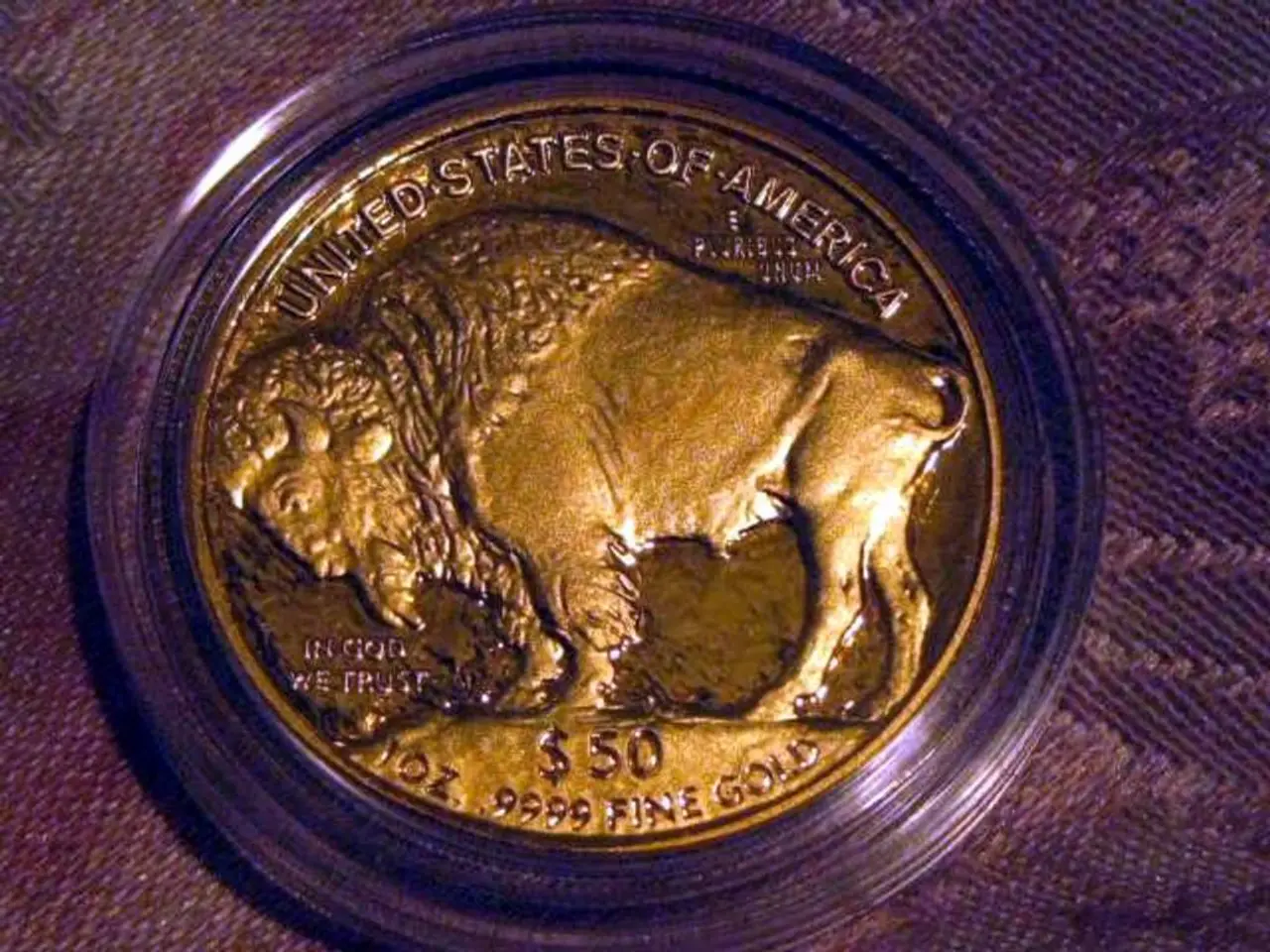Currency Values Decrease following President Trump's Proposed Appointment to the Federal Reserve Governor Position
The dollar is experiencing a dip today, trading above its 1.5-week low, but remaining below the 98.2 mark on the U.S. Dollar index. This decline is partly due to political uncertainties and tariff-related inflation pressure, with the market anticipating a likely Federal Reserve interest rate cut in September, which typically weakens the dollar further.
Meanwhile, gold holdings in ETFs have reached a two-year high, and silver holdings in ETFs have hit a three-year high, reflecting the safe-haven appeal of precious metals. These metals are climbing today, with gold reaching a 3.5-month high and silver a 2-week high, as concerns about President Trump's tariff policies and geopolitical risks continue to mount.
The euro is expected to strengthen against the dollar in the coming months, partly due to tariffs raising import costs and limiting U.S. economic growth momentum relative to Europe. The USD/JPY pair, while not explicitly data-backed in current reports, is likely under pressure as well, given the dollar's decline on tariff-related economic concerns and rate cut expectations.
The Trump administration's tariffs on gold bars, an uncommon move for precious metals, can impact supply chains and pricing. While tariffs may raise costs for gold imports, overall precious metals often benefit from a weaker dollar and inflationary pressures caused by tariffs. However, the direct price effects from the new tariffs on gold bars specifically are yet to fully materialize.
In addition, President Trump announced a 100% tariff on semiconductor imports and plans to double tariffs on US imports from India to 50% from the current 25%, due to India's purchases of Russian oil. These moves are expected to have further implications for the U.S. dollar and global markets.
Meanwhile, the weaker dollar today is supportive of precious metals, as demonstrated by the increases in gold and silver prices. Other factors contributing to the rise in gold prices include concerns about supply disruptions after the U.S. Customs and Border Protection agency announced tariffs on one-kilogram and 100-ounce gold bars exported by Switzerland into the U.S.
In other economic news, the July eco watchers outlook survey for Japan rose to a 6-month high of 47.3, and gold buying by China's central bank in July boosted its gold reserves for the ninth consecutive month. Higher T-note yields today are limiting losses in the dollar.
The nomination of Stephen Miran, currently chairman of the Council of Economic Advisors, as a temporary replacement for Adrianna Kugler as Fed Governor, is also noteworthy. Miran is seen as dovish and supporting President Trump's calls for lower interest rates. Companies would be eligible for exemptions if they demonstrate a commitment to building their products in the U.S.
References: [1] Bloomberg, 2025. "Trump's Tariffs and Their Impact on the U.S. Dollar, Major Currency Pairs, and Precious Metals." [2] Reuters, 2025. "U.S. Inflation Holds Steady in July 2025, Despite Tariff-Induced Price Increases."
Businesses might find investing in precious metals appealing during times of political uncertainties and tariff-related inflation pressure, as these metals often benefit from a weaker dollar and inflationary pressures caused by tariffs, as seen in the current rise in gold and silver prices. Consequently, the anticipated Federal Reserve interest rate cut in September could further weaken the dollar, making precious metals an even more attractive investment option in the financial market.




